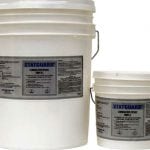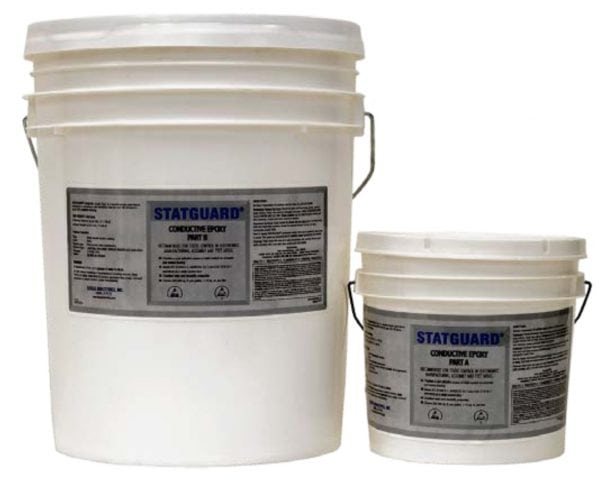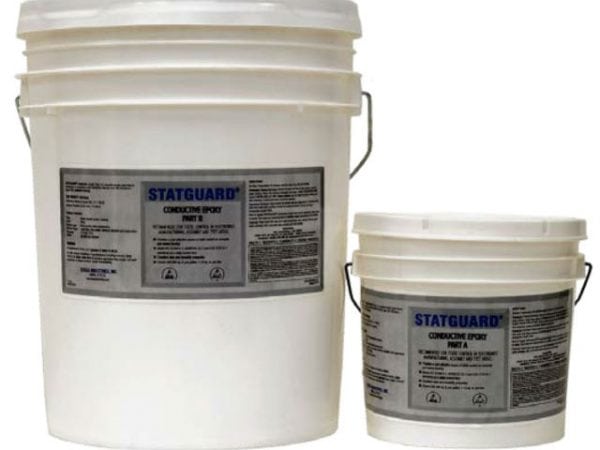Any coating in industrial premises must be protected from static electricity. To protect against the occurrence of electrical discharges, special coatings are used. One of the options for such a coating is antistatic paint.
- The principle of static electricity
- Tasks of antistatic paints and varnishes
- Antistatic paints and varnishes
- Antistatic additives

The principle of static electricity
The electrical potential created by free particles on the surface of matter is called static electricity. The peculiarity of the charge is accumulation to large values. At a certain moment, an instantaneous electric discharge occurs, sparking occurs.
Tasks of antistatic paints and varnishes
Static electricity is a source of danger, therefore protection against it is required in many non-residential premises. These include:
- Painting with antistatic materials is mandatory used in server and computer systems, telephone exchanges and other communication centers, television and radio studios. If an electric charge occurs in such rooms, malfunctions, loss of digital data, or even equipment malfunction are possible.
- Antistatic coatings are used in all kinds of medical institutions: intensive care units, diagnostic centers, operating rooms. That is, in places where there is important equipment and it is necessary to ensure the safety of patients.
- In industrial buildings, in workshops for the assembly of electronic devices, in laboratories, antistatic coatings are also in demand.
- Antistatic coatings are required in all rooms where there is a risk of explosion due to the interaction of the spark with explosive gases or flammable materials.
- On antistatic paints and varnishes dirt and dust does not accumulate. Therefore, it is not difficult to clean such rooms. The ability of paintwork materials to repel dirt and dust is maintained throughout the entire period of operation of the treated surface.
- Hygiene, high environmental safety (there are no solvents in the compositions) is another distinguishing feature of antistatic coatings. Such qualities are attractive for food factories, hospitals, kindergartens and schools, catering establishments, etc.
- Antistatic paints are used in private homes, in rooms where increased hygienic or fire-fighting qualities are required.
Antistatic paints and varnishes
To protect surfaces, there are both antistatic paints and varnishes. The compositions can be single-component or two-component. The latter are materials whose components are mixed right before use.
Paints and varnishes also vary in degree of transparency and tones. Powder paint is available. Powder compounds can be used to treat concrete, wooden surfaces, metal, etc.
Powder formulations are most often used for painting metal surfaces. At the same time, antistatic paints have another positive property - they protect the metal from corrosion processes.
Powder formulations are produced in cardboard packaging weighing up to 25 kilograms. Paints and varnishes are recommended to be stored in a dry room without direct sunlight and at a temperature not exceeding 25 degrees Celsius. Higher temperatures cause lumps due to powder particles sticking together.
If the powder paint composition was stored at a temperature below 5 degrees Celsius, then before use it should be held for 12 hours at 20-25 degrees Celsius. If you adhere to the recommendations on storage conditions, paints and varnishes with antistatic properties can be stored for 6 months.
to contents ↑Antistatic additives
It happens that a paint and varnish composition with antistatic characteristics does not correspond to the planned design, or you need to fill the floor without the possibility of changing the finish coating. In such cases, special antistatic additives are used. Their principle is to equalize potentials on the coating and in the air. As a result, the accumulated charges "drain".
Additives are available in the form of a paste, which must be mixed with paints or varnishes immediately before surface treatment. The consumption of the additive is 400-500 grams per 10 kilograms of the paintwork.
Note! Additives may only be used with water dispersible formulations.
Mixing with paint or varnish is carried out as follows:
- For 3-5 minutes, mix the paint with a mixer (the highest speed).
- Without stopping stirring, fill in the recommended amount of the additive and mix for another 3-5 minutes. Rotation can be either direct or reverse. The main thing is not to leave “dead zones” in the tank with the composition.
- The mixture can be used for 24 hours. If the mixture has not been used within 2 hours, it must be mixed again.
Note! Additives are used only with topcoats. Together with intermediate primers or fillers, the use of such additives does not make sense.
Before painting, the surface must be degreased, having previously cleaned it of contaminants. This approach will ensure high-quality adhesion of the paint to the surface.







Good afternoon, Leonid!
Our company participates in a tender for the manufacture and supply of a communications block box for Rosneft. The block provides for a floor of corrugated steel sheet and its coloring with antistatic material (paint). Interested in what kind of paint should be applied, price, consumption per 1m2. Block = 3.0x3.0 m.